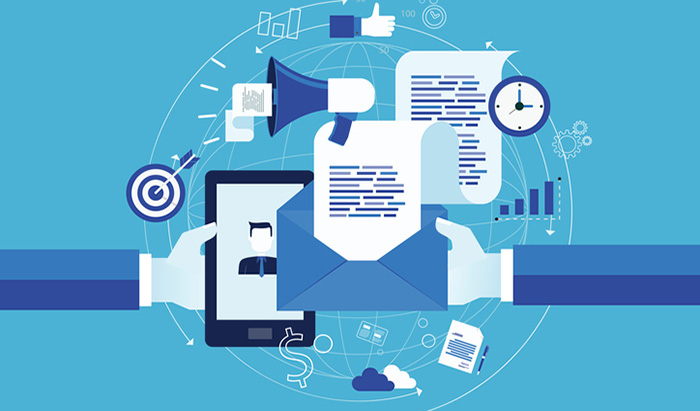In the competitive world of email marketing, where attention spans are notoriously short, it’s essential to ensure that every word in your email copy serves a purpose. Fluff—unnecessary words or overly elaborate phrases—can dilute your message and lead to disengagement. To craft emails that captivate your audience and drive action, you need to master the art of concise and impactful communication. Here’s a comprehensive guide on how to avoid using too much fluff in your email copy.
1. Understand Your Audience’s Needs
Before you start writing, it's crucial to have a clear understanding of your audience’s needs and preferences. Knowing what your readers are interested in allows you to tailor your content to provide value directly relevant to them. This alignment ensures that every sentence in your email has a clear purpose, reducing the likelihood of fluff. For instance, if you’re writing to a group of tech-savvy individuals about a new software release, your focus should be on features and benefits rather than introductory pleasantries.
2. Define Your Objective
Each email should have a specific goal, whether it’s to inform, persuade, or entertain. Clearly define what you want to achieve with your email and keep this objective at the forefront as you write. If the purpose is to promote a product, for example, concentrate on the product’s benefits and how it addresses the recipient's pain points. Avoid tangents or irrelevant information that doesn't contribute directly to this goal.
3. Use Clear and Direct Language
One of the most effective ways to cut down on fluff is to use clear and direct language. Avoid using complex vocabulary or jargon unless it’s necessary and appropriate for your audience. Opt for straightforward words and phrases that convey your message efficiently. For example, instead of saying "We are thrilled to inform you of the upcoming groundbreaking innovations that will revolutionize your experience," you might say, "We’re excited to introduce new features that will improve your experience."
4. Write in Short Sentences and Paragraphs
Long sentences and paragraphs can overwhelm readers and dilute your message. To maintain clarity and engagement, write in short sentences and keep paragraphs brief. This approach not only makes your email easier to read but also helps in eliminating unnecessary filler content. For example, instead of a lengthy explanation, break it down into concise, digestible points.
5. Eliminate Redundancies
Review your email copy for redundant phrases or repetitive information. Often, fluff sneaks in through repetition or reiteration of points. Ensure that each sentence adds new value to the content and that your message is not being repeated in different ways. For example, instead of repeating "We offer unparalleled customer service," you could succinctly say, "Our customer service is available 24/7 to assist you."
6. Focus on Benefits, Not Features
When promoting a product or service, focus on how it benefits the reader rather than just listing features. Readers are more interested in how something will solve their problems or improve their lives. Instead of saying "Our software includes advanced analytics, real-time reporting, and user-friendly dashboards," you could say, "Our software helps you make data-driven decisions with ease, thanks to its intuitive interface and real-time insights."
7. Use Active Voice
Active voice makes your writing more engaging and direct. It emphasizes the action and the actor, which helps in conveying your message more effectively. For example, instead of saying "The report was reviewed by our team," use "Our team reviewed the report." Active voice eliminates unnecessary words and focuses on the key message.
8. Incorporate Bullet Points and Lists
Bullet points and lists are excellent tools for presenting information clearly and concisely. They break down complex information into easily digestible chunks, helping to highlight key points without the need for lengthy explanations. For instance, if you’re outlining the benefits of a product, use a bulleted list to showcase each benefit succinctly.
9. Prioritize Key Information
Place the most critical information at the beginning of your email. This ensures that even if a reader skims through the content, they will catch the most important details. The structure of your email should follow the inverted pyramid style, where you start with the key message and then provide additional information in descending order of importance.
10. Edit Ruthlessly
Editing is where you can truly cut down on fluff. After drafting your email, go back and review it with a critical eye. Look for any superfluous words or sentences that don’t add value. Tools like Hemingway Editor or Grammarly can assist in identifying and removing unnecessary words. Don’t be afraid to cut out entire sections if they don’t serve your purpose.
11. Test and Analyze
Finally, testing and analyzing your email performance can provide insights into whether your messages are effective or if they contain unnecessary fluff. Track metrics such as open rates, click-through rates, and engagement levels to see how your audience responds. Based on this data, refine your approach to minimize fluff and enhance clarity.
In summary, avoiding fluff in your email copy involves understanding your audience, defining clear objectives, using direct language, and focusing on the core message. By employing these strategies, you can create emails that are not only concise but also compelling and effective in driving engagement and achieving your marketing goals. Remember, every word counts, so make each one purposeful and impactful.
Frequently Asked Questions (FAQs)
1. What is fluff in email copy, and why should I avoid it?
Answer: Fluff in email copy refers to unnecessary or overly elaborate words and phrases that do not add value to the message. Avoiding fluff is important because it helps keep your emails clear, concise, and engaging, ensuring that your audience receives the intended message quickly without losing interest.
2. How can I understand my audience’s needs to avoid fluff?
Answer: To understand your audience’s needs, conduct research to identify their preferences, pain points, and interests. Use this information to tailor your email content to address their specific needs and provide relevant value, which helps in avoiding irrelevant or fluffy content.
3. How do I define the objective of my email?
Answer: Define the objective of your email by identifying the primary goal you want to achieve. Whether it's to inform, persuade, or entertain, having a clear objective will guide your writing and ensure that every part of your email supports this goal.
4. What are some tips for using clear and direct language in emails?
Answer: Use simple, straightforward words and phrases. Avoid jargon or complex vocabulary unless necessary for your audience. Write in short sentences and paragraphs to enhance readability and ensure that each sentence directly contributes to your message.
5. How can I avoid redundant information in my email copy?
Answer: To avoid redundancy, review your email for repeated points or phrases. Ensure that each sentence adds new information or value. Use editing tools to help identify and eliminate repetitive content.
6. Why is it important to focus on benefits rather than features?
Answer: Focusing on benefits rather than features highlights how your product or service solves the reader’s problems or improves their situation. Benefits address the reader’s needs and desires, making your email more compelling and relevant.
7. How does using active voice improve my email copy?
Answer: Active voice makes your writing more engaging and direct by emphasizing the action and the actor. It reduces unnecessary words and makes your message clearer and more impactful.
8. When should I use bullet points and lists in my email?
Answer: Use bullet points and lists to present complex information or multiple key points clearly and concisely. They help break down content into manageable chunks, making it easier for readers to quickly understand the main takeaways.
9. What is the inverted pyramid style, and how does it help in email writing?
Answer: The inverted pyramid style involves placing the most critical information at the beginning of the email, followed by additional details in descending order of importance. This structure ensures that even if readers skim through, they will catch the key message.
10. How can I effectively edit my email copy to remove fluff?
Answer: After drafting your email, review it critically to identify and remove unnecessary words or sentences. Use editing tools to help with this process and consider cutting out entire sections if they don’t contribute to your main message.
Get in Touch
Website – https://www.webinfomatrix.com
Mobile - +91 9212306116
Whatsapp – https://call.whatsapp.com/voice/9rqVJyqSNMhpdFkKPZGYKj
Skype – shalabh.mishra
Telegram – shalabhmishra
Email - info@webinfomatrix.com

%20(1).jpg)









 English (US) ·
English (US) ·